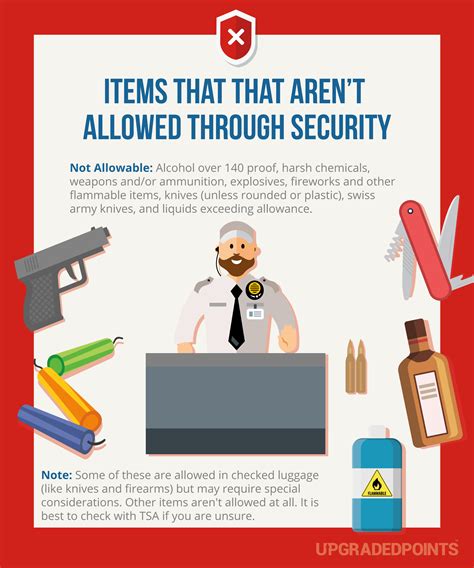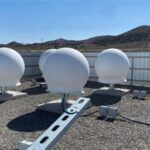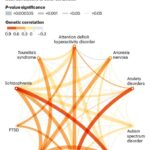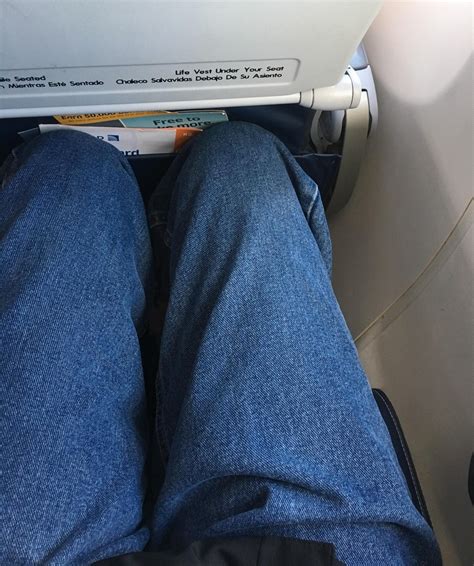
Effective immediately, the Transportation Security Administration (TSA) is enforcing a new policy requiring travelers to place all electronic devices larger than a cell phone in a separate bin for screening at airport security checkpoints. The updated procedure aims to streamline the screening process and improve threat detection by providing TSA officers with a clearer X-ray image of electronic items, according to TSA officials.
The change, which has been gradually implemented across various airports nationwide, is now being consistently applied across all U.S. airports. Passengers are no longer permitted to conceal these devices within carry-on bags, amongst clothing, or other items. This revision to security protocols, as stated on the TSA website, necessitates that laptops, tablets, e-readers, and larger gaming devices be submitted in individual bins, similar to how liquids and gels have been handled for years.
“Travelers will be asked to place electronics larger than a cell phone, like laptops, tablets, and e-readers, in a bin for screening in standard lanes,” the TSA confirmed. The purpose of the measure is not only to reduce clutter within carry-on bags that obscures X-ray images but also to expedite the screening process for both TSA officers and passengers, reducing wait times at security checkpoints.
This directive responds to evolving security threats and aims to optimize the effectiveness of existing screening technologies. By isolating electronic devices, TSA screeners can more effectively identify potential threats that might otherwise be masked by the dense and overlapping contents of a typical carry-on bag.
The new rule has already begun to impact passenger behavior, with many travelers adjusting their packing strategies to accommodate the separate screening requirement. Frequent flyers are advised to familiarize themselves with the updated procedures to ensure a smoother and more efficient airport experience.
Background and Implementation
The TSA has been testing and refining the policy of separating electronic devices for several years. These trials allowed the agency to assess the impact of the new procedure on checkpoint efficiency and security effectiveness. Data collected during these tests demonstrated a marked improvement in the clarity of X-ray images and a reduction in the number of bags requiring secondary inspection, leading to the nationwide rollout.
The implementation has involved considerable training for TSA officers to ensure they can effectively guide passengers through the new process and handle any questions or concerns that may arise. Additionally, airports have been reconfiguring checkpoint layouts to accommodate the increased number of bins required for electronic devices.
The TSA’s decision to implement this policy across all U.S. airports aligns with global security standards and best practices. Many international airports already require passengers to separate electronic devices for screening, and the TSA is committed to maintaining a high level of security consistent with international norms.
Passenger Experience and Tips for Smooth Screening
For passengers, the key to navigating this new procedure smoothly is preparation. It is recommended that travelers pack their electronic devices in an easily accessible location within their carry-on bags. This will allow them to quickly remove the devices and place them in a separate bin when instructed by a TSA officer.
“We advise passengers to organize their carry-on bags in such a way that electronic devices can be easily removed,” a TSA spokesperson stated. “This will help expedite the screening process and reduce the likelihood of delays.”
Passengers should also be aware of the specific types of electronic devices that are subject to the new rule. Generally, any device larger than a standard cell phone must be placed in a separate bin. This includes laptops, tablets, e-readers, larger gaming consoles, and any other similar electronic items. Smaller items such as cell phones, smartwatches, and smaller music players can typically remain in the carry-on bag.
The TSA also advises passengers to remove any cases or covers from their electronic devices before placing them in the bin. This will allow TSA officers to get a clearer view of the device during the X-ray screening process.
Travelers with TSA PreCheck® may experience expedited screening procedures, but even PreCheck passengers are generally required to remove electronic devices from their bags. The TSA website and mobile app provide detailed information about PreCheck benefits and requirements.
Security Rationale and Threat Detection
The primary driver behind the new policy is to enhance security by improving the ability of TSA officers to detect potential threats. Electronic devices, with their complex internal components, can sometimes obscure other items within a carry-on bag, making it more difficult for screeners to identify concealed threats.
By separating electronic devices, TSA officers can obtain a clearer X-ray image of each device, allowing them to more effectively identify any suspicious items or modifications. This is particularly important in light of evolving security threats, which may involve attempts to conceal explosives or other dangerous materials within electronic devices.
The TSA employs a range of advanced screening technologies to detect threats, including X-ray machines, advanced imaging technology (AIT), and explosive trace detection (ETD). The separation of electronic devices complements these technologies by providing TSA officers with a more detailed view of each item.
The TSA continuously monitors and adapts its security procedures to address emerging threats. The new policy on electronic devices is part of this ongoing effort to enhance security and protect the traveling public.
Impact on Wait Times and Airport Operations
While the new policy is designed to improve security, it also has the potential to impact wait times at airport security checkpoints. The TSA is working to minimize any potential delays by optimizing checkpoint layouts, increasing staffing levels, and providing training to TSA officers.
The agency is also encouraging passengers to do their part by preparing for screening in advance and following the instructions of TSA officers. By working together, the TSA and passengers can help ensure a smooth and efficient screening process.
Preliminary data suggests that the new policy has not significantly increased wait times at most airports. However, the TSA is closely monitoring checkpoint operations and will make adjustments as needed to address any bottlenecks or delays.
The TSA also utilizes various technologies to manage checkpoint operations and provide passengers with real-time information about wait times. The TSA website and mobile app offer tools to help passengers plan their travel and avoid potential delays.
Comparison with International Standards
The TSA’s new policy aligns with security standards and best practices at many international airports. Several countries already require passengers to separate electronic devices for screening, including Canada, the United Kingdom, and Australia.
These countries have implemented similar policies to enhance security and improve the efficiency of the screening process. The TSA collaborates with international partners to share information and best practices related to aviation security.
The International Civil Aviation Organization (ICAO), a specialized agency of the United Nations, sets global standards for aviation security. The TSA’s new policy is consistent with ICAO guidelines and recommendations.
Addressing Concerns and Misconceptions
Some passengers have expressed concerns about the new policy, particularly regarding the potential for damage to electronic devices during screening. The TSA has taken steps to minimize this risk by providing bins with padded surfaces and training TSA officers on how to handle electronic devices carefully.
“We understand that passengers are concerned about the safety of their electronic devices,” a TSA spokesperson said. “We are committed to handling these items with care and minimizing the risk of damage.”
The TSA also advises passengers to pack their electronic devices in protective cases or sleeves to further reduce the risk of damage. Additionally, passengers can request a hand inspection of their electronic devices if they have concerns about X-ray screening.
Another common misconception is that the new policy only applies to laptops. In fact, the policy applies to all electronic devices larger than a standard cell phone, including tablets, e-readers, and larger gaming consoles.
The TSA website and mobile app provide detailed information about the new policy, including a list of electronic devices that are subject to the separate screening requirement.
Future Developments and Technology
The TSA is continuously evaluating and improving its security procedures and technologies. In the future, the agency may implement advanced screening technologies that eliminate the need for passengers to remove electronic devices from their carry-on bags.
These technologies, such as computed tomography (CT) scanners, can create detailed 3D images of the contents of a carry-on bag, allowing TSA officers to identify potential threats without requiring passengers to remove any items.
The TSA is currently testing CT scanners at select airports and plans to expand their use in the coming years. These advanced technologies have the potential to significantly improve security and reduce wait times at airport security checkpoints.
The TSA is also exploring the use of artificial intelligence (AI) and machine learning (ML) to enhance threat detection capabilities. AI and ML algorithms can be trained to identify suspicious patterns and anomalies in X-ray images, helping TSA officers to more effectively detect potential threats.
Expert Commentary and Analysis
Security experts have generally praised the TSA’s new policy on electronic devices, noting that it is a logical step to enhance security in light of evolving threats.
“Separating electronic devices is a common-sense measure that will help TSA officers to more effectively detect potential threats,” said Dr. Robert Johnson, a security analyst at the Center for Strategic and International Studies. “It is important for the TSA to continuously adapt its security procedures to address emerging threats, and this new policy is a positive step in that direction.”
However, some experts have also raised concerns about the potential impact of the new policy on wait times and airport operations.
“The TSA needs to ensure that it has the resources and training in place to implement this new policy effectively,” said John Smith, a former TSA administrator. “Otherwise, there is a risk that it could lead to increased wait times and frustration for passengers.”
Conclusion
The TSA’s new policy requiring passengers to place electronic devices larger than a cell phone in a separate bin for screening is a significant change that aims to enhance security and improve the efficiency of the screening process. While the policy may require some adjustments on the part of passengers, it is ultimately intended to protect the traveling public and prevent potential threats. By understanding the new procedures and preparing in advance, passengers can help ensure a smooth and efficient airport experience. The continuous monitoring and adaptation of security measures, alongside the integration of advanced technologies, are crucial for maintaining a safe and secure aviation environment.
Frequently Asked Questions (FAQ)
-
What electronic devices need to be placed in a separate bin?
Any electronic device larger than a standard cell phone must be placed in a separate bin for screening. This includes laptops, tablets, e-readers, larger gaming consoles (like Nintendo Switch), cameras that are larger than a cell phone, and video players. Smaller items like cell phones and smartwatches can typically remain in your carry-on bag. As a general rule, if you are unsure, it is always best to remove it and ask the TSA officer for guidance.
-
Does TSA PreCheck® exempt me from removing electronics?
While TSA PreCheck® expedites the screening process, passengers enrolled in PreCheck are generally still required to remove electronic devices larger than a cell phone from their bags and place them in a separate bin. Some airports with advanced screening technology may allow PreCheck passengers to leave electronics in their bags; however, always follow the instructions provided by the TSA officers at the checkpoint.
-
What if I have a medical device?
Passengers with medical devices should inform the TSA officer before screening. Depending on the device, it may need to be screened separately. The TSA has specific procedures for screening medical devices, and passengers can find more information on the TSA website or by contacting the TSA Cares helpline prior to travel. It is advisable to carry documentation from your doctor regarding the medical device.
-
Can I request a hand inspection of my electronic devices?
Yes, passengers can request a hand inspection of their electronic devices if they have concerns about X-ray screening. Inform the TSA officer of your preference, and they will conduct a manual inspection of the device. Note that a hand inspection may take longer than X-ray screening, so plan accordingly.
-
How does this new rule improve security?
The new rule improves security by providing TSA officers with a clearer X-ray image of electronic devices. These devices, with their complex components, can obscure other items within a carry-on bag, making it more difficult to detect potential threats. By separating electronic devices, TSA officers can more effectively identify any suspicious items or modifications.
- What if I accidentally leave my electronic device in my bag?
If you accidentally leave your electronic device in your bag, the TSA officer will likely ask you to remove it and place it in a separate bin for screening. This may cause a slight delay in the screening process, but it is essential to comply with the TSA’s instructions. Repeated failure to comply may lead to additional screening measures or, in rare cases, denial of boarding.
- Are there any exceptions to this rule?
While the rule generally applies to all electronic devices larger than a cell phone, TSA officers may exercise discretion based on the specific circumstances. For example, very small tablets or e-readers may be allowed to remain in your bag. However, it’s always best to err on the side of caution and remove the device unless specifically instructed otherwise.
- What happens if my electronic device triggers an alarm during screening?
If your electronic device triggers an alarm during screening, the TSA officer will conduct additional screening measures to determine the cause of the alarm. This may involve a hand inspection of the device, as well as the use of explosive trace detection (ETD) technology. It is important to remain calm and cooperative during this process, and to follow the instructions of the TSA officer.
- How can I stay updated on any changes to TSA security procedures?
You can stay updated on any changes to TSA security procedures by visiting the TSA website (tsa.gov) or by downloading the TSA mobile app. The TSA also provides updates through its social media channels, such as Twitter (@TSA) and Facebook (Transportation Security Administration). Staying informed about the latest security procedures will help you to prepare for travel and avoid potential delays.
- What if I have a damaged or broken electronic device?
If you have a damaged or broken electronic device, you should inform the TSA officer before screening. The officer may need to conduct additional screening measures to ensure that the device does not pose a security risk. It is also a good idea to carry documentation regarding the damage, such as a repair estimate or insurance claim.
- Can I use a plastic bag instead of a bin for my electronics?
No, the TSA requires you to place your electronic devices in a designated bin provided at the security checkpoint. Using a plastic bag is not an acceptable alternative, as it may not allow for proper screening of the device. The bins are designed to facilitate the X-ray screening process and ensure that TSA officers can get a clear view of the items inside.
- What should I do if I see something suspicious at the security checkpoint?
If you see something suspicious at the security checkpoint, such as an unattended bag or a person acting suspiciously, you should immediately report it to a TSA officer or other airport personnel. Do not attempt to investigate the situation yourself, as this could put you at risk. Your vigilance and reporting can help to prevent potential security incidents.
- Are power banks and portable chargers subject to the same rules as other electronics?
Yes, power banks and portable chargers larger than a cell phone are generally subject to the same rules as other electronic devices and must be placed in a separate bin for screening. This is because they contain batteries and electronic components that can obscure X-ray images. Smaller power banks may be allowed to remain in your carry-on bag, but it is always best to check with the TSA officer if you are unsure.
- What if I have a very expensive or fragile electronic device?
If you have a very expensive or fragile electronic device, you may want to consider shipping it to your destination instead of carrying it through airport security. This can help to reduce the risk of damage during screening. If you do choose to carry the device through security, be sure to pack it in a protective case and inform the TSA officer of its fragility. You can also request a hand inspection of the device if you are concerned about X-ray screening.
- Does this rule apply to checked baggage as well?
No, this rule primarily applies to carry-on baggage. While you can pack electronic devices in your checked baggage, it is generally recommended to carry them in your carry-on bag if possible. This allows you to keep them with you during the flight and reduces the risk of loss or damage. However, be aware that some airlines may have restrictions on the types of batteries that can be transported in checked baggage, so it is important to check with your airline before traveling.
- What are the consequences of not following the TSA’s instructions regarding electronic devices?
The consequences of not following the TSA’s instructions regarding electronic devices can vary depending on the severity of the infraction. At a minimum, you may experience delays in the screening process. In more serious cases, you may be subject to additional screening measures, such as a pat-down or a search of your belongings. In extreme cases, you may be denied boarding or even arrested. It is important to cooperate with TSA officers and follow their instructions to ensure a smooth and safe travel experience.
- How are the bins for electronic devices sanitized?
The TSA has implemented enhanced cleaning protocols to sanitize the bins used for electronic devices and other items at security checkpoints. These protocols typically involve regular cleaning with disinfectant wipes or sprays, as well as the use of antimicrobial coatings on the bins. The frequency of cleaning may vary depending on the airport and the level of passenger traffic. Passengers can also use their own hand sanitizer after handling the bins to further protect themselves.
- Does this rule apply to film cameras or other non-digital electronic devices?
Yes, the rule generally applies to all electronic devices larger than a cell phone, regardless of whether they are digital or non-digital. This includes film cameras, portable DVD players, and other similar devices. The primary concern is the size and complexity of the device, which can obscure X-ray images and make it more difficult to detect potential threats.
- What if I am traveling with a group or family?
If you are traveling with a group or family, it is important to coordinate your efforts to ensure a smooth screening process. Designate one person to be responsible for removing electronic devices from your bags and placing them in the bins. Make sure everyone is aware of the TSA’s rules and instructions, and be prepared to assist each other as needed. This will help to minimize delays and ensure that everyone can get through security quickly and efficiently.
- Is there any plan to integrate automated screening systems in the future?
Yes, the TSA is actively exploring and implementing automated screening systems to enhance security and improve the efficiency of the screening process. These systems typically involve the use of advanced imaging technology, artificial intelligence, and robotics to automate tasks such as baggage handling, threat detection, and passenger screening. The goal is to create a more seamless and touchless travel experience while maintaining a high level of security. While full automation is still several years away, the TSA is committed to investing in and deploying these technologies to improve the overall travel experience for passengers.









